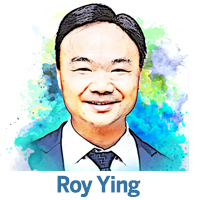The European Union’s 300 billion euro ($348 billion) trade deficit with China has become a focal point of rising tensions. China’s cost advantages are often misconstrued as the result of policy-driven overproduction and subsidies. EU officials claim that Chinese electric vehicles (EVs) are being “dumped” into Europe at “unfairly” low prices, threatening the survival of Europe’s vital automotive industry.
 Alicja Bachulska, a policy fellow at the European Council on Foreign Relations, highlighted “concerns” about the scale of subsidies and government intervention in China’s economy. However, such narratives often oversimplify the issue, overlooking the structural efficiencies that underpin China’s competitive pricing. The EU’s imposition of extra duties of up to 38 percent on Chinese electric vehicles, followed by China’s formal complaint to the World Trade Organization, has heightened uncertainty and could disrupt global supply chains.
Alicja Bachulska, a policy fellow at the European Council on Foreign Relations, highlighted “concerns” about the scale of subsidies and government intervention in China’s economy. However, such narratives often oversimplify the issue, overlooking the structural efficiencies that underpin China’s competitive pricing. The EU’s imposition of extra duties of up to 38 percent on Chinese electric vehicles, followed by China’s formal complaint to the World Trade Organization, has heightened uncertainty and could disrupt global supply chains.
As the Chinese Ministry of Foreign Affairs has frequently stated, “There is no winner in a trade war.” Addressing these tensions requires a deeper understanding of the structural differences that define China’s production ecosystem and uncovering opportunities for collaboration rather than conflict.
‘Price anchoring effect’ and misconceptions
One significant factor driving misconceptions is the “price anchoring effect”, in which Western consumers, including politicians, are accustomed to higher price points and perceive Chinese goods as “too cheap”, and assume that such low-price points must be the result of Chinese government subsidies. While strategic government support exists, it is only a small part of a much larger equation, which involves the cost advantage of Chinese manufacturers arising from an abundance of talent, a deep-rooted culture of automation, and the “common prosperity” philosophy. This misunderstanding, fueled by political rhetoric, distracts from the structural advantages that underpin China’s manufacturing efficiency.
China’s manufacturing strength is deeply rooted in its extraordinary concentration of skilled technical talent. “China stopped being a low-labor-cost company many years ago,” Apple CEO Tim Cook explained, emphasizing the density of highly skilled engineers and tooling experts. “In the US, you could have a meeting of tooling engineers, and I’m not sure we could fill the room. In China, you could fill multiple football fields.” This abundance of talent allows Chinese manufacturers to operate efficiently without engaging in the costly “talent wars” common in the West. Where skilled labor is scarce and wages are inflated in Europe and the United States, fair wages in China provide access to deep vocational expertise, a cornerstone of its production efficiency.
China’s cost advantages are built not on unfair practices but on decades of investment in human capital, automation, and supply-chain optimization. By prioritizing collaboration over confrontation, a more innovative and sustainable global economy could be built
China’s rapid adoption of automation further widens the gap. EV makers like BYD, XPeng, and Nio have invested heavily in robotics, achieving automation rates exceeding 90 percent. Tesla’s Shanghai Gigafactory operates at 95 percent automation, with some processes nearing full automation.
By contrast, Western automakers face legacy costs, including retrofitting older facilities and retraining unionized workforces, making it harder to match China’s efficiency. China’s government policies actively promote automation as a strategy for industrial modernization — a forward-looking approach that Western nations could emulate.
China’s manufacturing ecosystem also benefits from the government’s advocacy of the philosophy of “common prosperity”. This principle encourages corporations to invest in the communities they operate in, ensuring that more people benefit from China’s economic growth. As a result, more resources are directed toward education, research and development, and community development. For instance, BYD alone has donated 3 billion yuan ($417.6 million) in scholarships to groom the next generation of engineers, addressing the growing demand for technical expertise in the EV and other manufacturing sectors. Similarly, companies like Huawei and Tencent invest heavily in vocational training, university partnerships, and technological innovation, further strengthening the talent pipeline and fostering innovation across industries.
The results are evident. BYD and Contemporary Amperex Technology Co Ltd (CATL) dominate the global EV battery sector, commanding 70 percent of the market through sustained investment in research and scaling up production. China’s dominance in EV battery production is another critical factor. Companies like CATL and BYD have achieved this position through years of innovation and economies of scale, not through government subsidies. While the EU has imposed tariffs on Chinese EVs, citing “subsidized” battery costs, it overlooks the fact that China’s leadership stems from strategic investment and industry expertise.
Chinese automaker Geely’s 120 million pound ($159.6 million) investment in the London Electric Vehicle Co has revitalized the British automaker, enabling its transformation into a key player in electric taxis and contributing to the preservation of local jobs. In the UK public transport sector, BYD entered into a partnership with Alexander Dennis to supply 1,500 zero-emission buses in London. These examples exemplify how collaboration, even in competitive industries, delivers mutual benefits and drives progress toward sustainability.
Recognizing the structural differences between Chinese and Western EV production costs is crucial to fostering a more cooperative and less adversarial relationship. China’s cost advantages are built not on unfair practices but on decades of investment in human capital, automation, and supply-chain optimization. By prioritizing collaboration over confrontation, a more innovative and sustainable global economy could be built.
The author is a senior lecturer in the Department of Marketing, the Hang Seng University of Hong Kong.
The views do not necessarily reflect those of China Daily.


